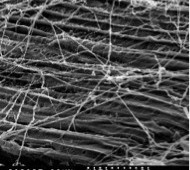A photosynthetic pathway for mats under anoxic conditions
Many microbes are unculturablebecause they do not thrive when extracted from their habitats. Studies conducted within the context of a group allows researchers to see the interactions taking place and use the clues provided to identify the individual roles of the microorganisms. Photosynthetic microbial mats fix carbon in the day, but it turns out that… [Read More]








